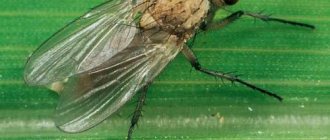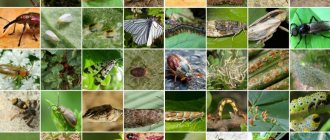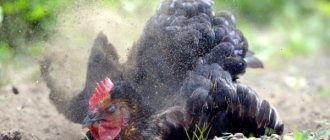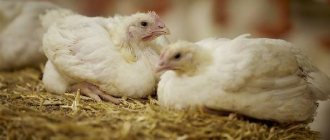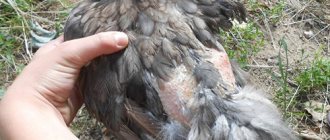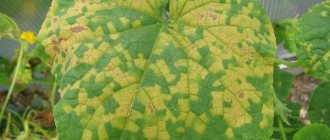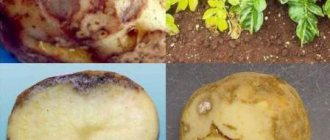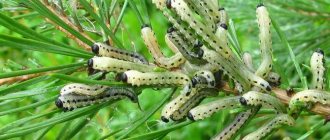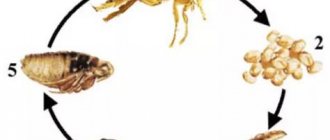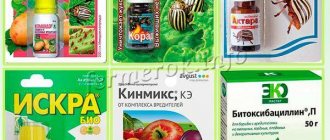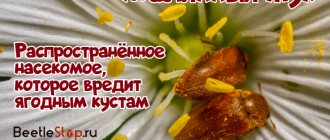Without human help, only weeds grow well. Other vegetables - some less, some more - require our protection and care. Here you will find a list of problems that you may encounter when growing cucumbers and how to solve them.
Cucumbers, unlike tomatoes, are easier to grow. They are not so demanding on growing conditions, they require less care, and they produce good yields. However, problems may arise in the process of growing cucumbers. The main ones are diseases and insect pests, which, unfortunately, do not bypass this juicy vegetable.
Main pests of cucumbers: plant treatment (photo)
Since cucumbers are more than 90% water, it is easy to guess that they need frequent and abundant watering. High air humidity, combined with elevated temperature, as well as the enclosed space of the greenhouse, is an ideal “incubator” for many pathogenic fungi, viruses and bacteria that often attack bushes and crops. But this is not the only attack from which plants can suffer. Cucumbers are a favorite treat for many insects. And although many modern hybrids have protection against at least some diseases at the genetic level, breeders are not yet able to save them from pest attacks. If you don’t start taking measures in time, you could easily lose a significant part or all of your harvest.
No breeder has yet been able to protect cucumbers from pests.
Often, gardeners themselves unwittingly contribute to the appearance of pests. The risk of infection increases significantly if:
- neglect of weeding and pre-planting seed treatment;
- failure to ensure optimal temperature and air humidity;
- lack of ventilation in greenhouses and greenhouses;
- untimely replacement of soil and non-compliance with crop rotation.
Cucumbers appeal to many “universal” pests, which will not disdain most plantings in the garden.
Slugs
These pests are quite easy to identify. Despite the fact that they are mainly nocturnal, slugs leave characteristic marks in the form of through holes in the fruits and traces of a sticky viscous liquid that shimmers silver in the sun. I no longer want to eat such cucumbers (and other fruits spoiled by them).
Dealing with slugs is relatively easy. Since they do not differ in their speed of movement and ability to mimic, manual collection of pests is quite effective. The procedure is best done in the early morning when they are least active.
You can create an almost insurmountable barrier for pests by surrounding the cucumber bushes with several rings of sand, wood ash, soda ash, spruce needles, ground eggshells, and so on. The delicate body of slugs does not have even minimal protection.
Homemade traps are also very effective. Deep containers are dug into the ground, the top edge of which should be flush with the soil. They are filled with sugar syrup, jam, beer. Slugs are well caught on cabbage leaves or grapefruit cut in half.
There are also special drugs - Meta, Thunderstorm, Slug Eater. But it is worth remembering that it is prohibited to use any chemicals during fruiting and at least 20 days before the expected harvest; it is undesirable during flowering and ovary formation. This does not apply to biological products, the effects of which disappear within 2-3 days.
Slugs leave traces of sticky, shiny liquid on cucumbers
Whitefly
Whiteflies look like moths - these small whitish, yellowish or grayish butterflies cling to the leaves of cucumber bushes from the inside out, rising into the air in a cloud at the slightest touch to the plant. Most often, greenhouse cucumbers suffer from them. Whitefly larvae feed on plant sap, and adults are carriers of many bacteria and viruses that are dangerous to them, for example, cucumber mosaic.
The most difficult thing is to prevent whiteflies from getting into the greenhouse. To do this, the windows and doors are curtained with a mesh with small cells or ordinary gauze. If it was not possible to avoid the appearance of pests, sticky tape to catch flies or homemade traps are hung near the plantings. For some reason, the whitefly is very partial to the color yellow. This feature is used by smearing pieces of cardboard with some adhesive substance.
Tobacco planted in a cucumber bed is guaranteed to distract attention. Then these bushes can be treated with a suitable insecticide - Aktellik, Aktara, Fitoverm.
Whiteflies mainly affect cucumbers growing in greenhouses and greenhouses.
Root nematode
The females of these worms lay eggs in the soil. The larvae choose roots as their habitat - characteristic spherical swellings of different sizes appear on them. Then they turn brown, thicken unnaturally, and become brittle. If you do not change the soil in a garden bed or greenhouse for a long time, any crops grown on it will suffer from the massive proliferation of nematodes. They are especially dangerous for cucumbers with their not very developed root system. The situation is aggravated by the fact that it is almost impossible to notice the appearance of nematodes in a timely manner. Their presence becomes obvious only when many plants have already been damaged. Therefore, special attention should be paid to prevention:
- alternating crops in the same bed or planting cabbage, radishes, radishes (and other plants from the Cruciferous family), garlic mixed with cucumbers - the nematode does not eat them;
- regular weeding;
- soil sterilization - watering with boiling water or freezing in winter;
- annual renewal of the soil in the greenhouse or at least its top layer (7–10 cm);
- treating any garden equipment with disinfectant solutions before use.
Cucumber roots affected by root-knot nematode look completely unnatural
Wireworm
The wireworm, also known as the larva of the click beetle, can most often be found in beds with potatoes and carrots. But if you actively fight him there, he may well switch to cucumbers. Omnivorous larvae destroy planted seeds and gnaw roots.
As part of the fight against wireworms, in late spring and early summer, as well as in autumn, the soil in the beds is deeply loosened, while adding slaked lime, dolomite flour, wood ash, crushed chalk, and powdered eggshells. All this neutralizes the increased acidity of the soil. It is in such soil that the wireworm feels best.
He also does not like high nitrogen content. But it is not recommended to get carried away with fertilizers that contain this macroelement. This is to the detriment of the future harvest. It is better to plant any legumes next to cucumbers.
For prevention, 0.5 liters of a bright pink solution of potassium permanganate is poured into the holes prepared for planting seeds or seedlings. And cut potatoes or carrots are buried in the ground to a depth of 15–20 cm. After 2-3 days, the root crop must be removed (to do this, a long stick is first stuck into it) and the larvae must be collected.
The wireworm's favorite crops are potatoes and carrots, but he may well switch to cucumbers
Medvedka
A fairly large insect feels most comfortable in nutritious, well-moistened soil. This is the kind of soil that is provided to cucumbers in greenhouses and greenhouses. Mole crickets live mainly underground, gnawing all the roots they come across along the way while moving.
They can be dealt with mechanically without resorting to hazardous chemicals. Deep digging of the soil in spring and autumn, manual collection of pests, and pouring vegetable oil or soap solution into the underground passages found are effective. You can also build traps - containers with water, corn or millet porridge. Marigolds are planted in a greenhouse or garden bed mixed with cucumbers; mole crickets really don’t like their pungent aroma.
While moving, the mole cricket gnaws any roots that get in its way.
Thrips
Thrips are small sucking insects. Adults are black in color and have the shape of an elongated ellipse with pointed ends. Pests are dangerous because insects at different stages of development are present on the plant at the same time.
They are easily identified by beige-silver “scratches” and vague yellowish or almost colorless spots on the underside of the sheet. Sticky traps are effective against adults, but not yellow, but blue. Regular weeding is also very important. For prevention, cucumber bushes are sprayed with infusions of garlic, onions, any strong-smelling herbs, and orange peel. If there is no effect, insecticides are used - Aktaru, Fury, Calypso, Inta-Vir.
Thrips are easy to recognize, but difficult to get rid of.
Of course, the list of pests dangerous to cucumbers is not limited to this. The most common are the following.
Video: typical pests for cucumbers
Cucumber beetles
Quite a rare, but very dangerous type of pest. There are two types of cucumber beetles - striped and spotted. Both measure about 1.5 mm in length. The larvae are white with brown heads. Adults overwinter in heaps of compost or garbage, and in the spring they feed on weeds until their favorite plants—cucumbers, pumpkins, and zucchini—sprout. Traces of the presence of the pest on the cucumber sprout are damaged leaves, scars on the stems, which are gnawed by beetle larvae.
However, the greatest damage is caused not by the insects themselves, but by the bacterial wilt and cucumber mosaic virus that they spread. Infected plants die, simultaneously attracting even more pests.
Measures to combat cucumber beetles in greenhouses:
- collect insects manually, inspecting cucumber seedlings from bottom to top;
- hang yellow adhesive tapes;
- for preventive purposes, before planting seedlings, disinfect the soil with a manganese solution;
- Do not plant pumpkin or melon next to the greenhouse.
Among the chemicals used in the fight against cucumber beetles are Carbaryl, Acetamiprid, and Fenpropatrin.
What to spray against melon aphids
Aphids are small yellowish or dark green insects that cling to the underside of leaves, buds, fruit ovaries, and the tops of young shoots in entire colonies. They feed on plant sap. As a result, the leaves wrinkle, become deformed, and the buds fall off. The cucumber bush practically stops growing, then dries and dies. Aphids are dangerous not only in themselves - they carry many dangerous microorganisms, for example, sooty fungus.
The melon aphid is a pest that is very easy to spot
If the problem is noticed in a timely manner, when there are still a few aphids, you can simply wash it off the bush by hosing the cucumbers with a stream of water under strong pressure. If there is no technical possibility, the leaves are simply wiped with soap suds.
Melon aphids cling to young cucumber leaves in a dense layer
Treatment of cucumbers against aphids with folk remedies
Folk remedies are good mainly for preventing aphids. Cucumbers growing in a greenhouse are sprayed with appropriate solutions every 7-10 days, in open ground - after each rain. Any product with a strong, pungent odor will do. He is very unpleasant to aphids.
- onion peel (100 g per 2.5–3 liters of boiling water, leave for 24 hours);
- garlic (a head crushed into a pulp per liter of hot water, leave for 2-3 days, dilute with water 1:5 before use);
- hot pepper (30 g of finely chopped pods or 10–15 g of powder per 10 liters of water, leave for 24 hours);
- tobacco crumbs (it is advisable that the tobacco is grown independently, 200 g of dry leaves per 10 liters of water, leave for 2-3 days, add a liter jar of sifted wood ash before use);
- dandelion leaves or roots (pass 400–500 g through a meat grinder, add 5 liters of water, let stand for 2–3 hours, add 30–40 g mustard powder before use);
- tops of tomatoes or potatoes (200 g of crushed raw materials per 5 liters of water, leave for 10–12 hours, add 25–30 g of soda ash before spraying).
An infusion of onion peels, like other products with pungent odors, is an effective remedy against melon aphids
Other methods of struggle
If time is lost and the pest has multiplied en masse, the most affected leaves and whole vines are cut off and burned as quickly as possible. The remaining plants in the greenhouse are fumigated with sulfur bombs, in the open ground they are sprayed with a solution of Karbofos (50 g per 10 liters of water) or dusted with colloidal sulfur powder.
When there is no effect, insecticides are used. Broad-spectrum drugs are mainly used against aphids - Inta-Vir, Fitoverm, Aktaru, Konfidor, Fufanon, Karate. Biological preparations - Biotlin, Iskra-Bio, Strela - cause less harm to plants (the fruits can be eaten 2-3 days after spraying). The solution for treating plants is prepared in strict accordance with the instructions given by the manufacturer in the instructions. The procedure is repeated every 4–7 days until the pest is completely destroyed. It is advisable to change medications at the same time.
Spicy herbs are a good protection against aphids. You can surround the beds or plant basil, coriander, lemon balm, mint, and dill mixed with bushes. Datura and henbane will also help, but they are very poisonous. Most of these plants are good honey plants and attract natural enemies of aphids - ladybugs - to the garden. By the way, if you wish, you can simply collect them somewhere and release them into a greenhouse or garden beds.
Inta-Vir is one of the most common broad-spectrum insecticides
Do not forget that aphids live in a stable symbiosis with ants. The latter will also have to be fought. The top layer of soil (5–7 cm) is removed from anthills found near the bed and the soil is sprinkled with soda ash, mustard, hot pepper, boric acid, or the soil is spilled with a solution of special preparations, for example, Anteater or ordinary boiling water.
Video: measures to combat aphids in the garden
Slugs - what harm do they cause and how to exterminate them?
At first glance, completely harmless slugs can actually cause the development of cucumber leaf disease and, as a consequence, a decrease in the quantity of the crop and its quality level. It is slugs that are carriers of fungal spores and a direct threat to crop infection with powdery mildew or gray rot.
Slugs appear in areas with favorable conditions for them:
- humid climate;
- abundance of weeds;
- an abundance of emptiness.
To prevent cucumber pests from having time to harm them, it is better to plant crops in early spring, giving them the opportunity to grow stronger. After harvesting, it is important to remove all vegetation that insect pests could use as a food source.
If slugs have appeared on the site and are aimed at destroying cucumbers, you can fight them in the following ways:
- Pick by hand with tweezers.
- Create grooves in the area that complicate the movement of insects.
- Use proven chemicals - metaldehyde, fluff lime, iron sulfate and others.
- Attract frogs, toads and lizards for natural pest control.
- Create favorable conditions for nesting birds of prey - starlings, blackbirds, magpies, etc.
Compliance with the rules regarding the care of the site and timely planting of crops will be a kind of guarantee that diseases and pests of cucumbers will not disrupt plans for the seasonal harvest.
Spider mite
Spider mites are a dangerous garden pest that affects most plants. They themselves are practically invisible, but the thin, translucent cobwebs entwining the petioles of leaves, buds and tops of shoots are striking. Spider mites feed on plant sap, so the affected parts quickly turn yellow, dry out and die. At first, only small yellowish or translucent spots are visible on them. It also spreads a fungus that causes a very dangerous disease - gray rot.
It is quite difficult to notice the spider mite itself with the naked eye, but traces of its vital activity are clearly visible
The pest feels best in a dry, hot climate, so conditions that are unacceptable for it are created in the greenhouse by increasing air humidity and regularly ventilating the room.
Plants affected by spider mites quickly turn yellow and dry out
Prevention and control at an early stage
It is impossible to cope with spider mites using folk remedies. Onion, garlic, and pepper infusions are used mainly for prevention. Plants are treated once every 5–12 days. It depends on how hot it is outside. The warmer it is, the more intensely spider mites reproduce. You can also place several containers with kerosene, turpentine, and acetic acid in the greenhouse. If cucumbers grow in open ground, this method is less effective.
When a tick is detected in time, spraying with 3% hydrogen peroxide (40 ml per liter of water) or ammonia (5-7 ml per liter) can help. The leaves of diseased plants are powdered with tobacco dust, colloidal sulfur or sifted wood ash. The following herbs are also quite effective:
- Datura. Fresh (1 kg) or dry (100 g) greens are poured with a liter of water and boiled for 2–3 hours. Before use, dilute another 10 liters of water.
- Dandelion. Greens or roots (0.5 kg) are crushed, pour 10 liters of warm water, and leave in the sun for 3–5 hours.
- Calendula. Dried flowers (400–500 g) are infused for 4–5 days, adding 3 liters of water.
- Sorrel. Finely chopped rhizomes are infused in 10 liters of water for 5–6 hours.
- Yarrow. Dry leaves and flowers (0.5 kg) are poured with a liter of boiling water for a day. Before use, dilute with water 1:10.
Cucumbers are processed with prepared decoctions and infusions using a drip irrigation system. Treatment should not be carried out under bright sun; the best time for it is early morning or late evening.
Datura is a fairly effective remedy against spider mites, but it is a strong poison for people and pets
Experienced gardeners advise planting tomatoes and cabbage mixed with cucumbers.
In case of mass invasion
Spider mites are not insects, so general insecticides are not suitable for controlling them. It is necessary to use special preparations - acaricides (Akarin, Agravertin, Floromite, Apollo, Sunmite). There are also less dangerous products of biological origin - Vertimek, Kleschevit, Fitoverm. Spider mites develop immunity very quickly, so for each subsequent treatment it is advisable to use a new product. Before the procedure, cucumber bushes must be cleaned of any cobwebs on them. It traps drops of water, preventing them from reaching the plant itself.
The first time after wintering, spider mite larvae live on weeds, so special attention must be paid to weeding. It is best to immediately cut off and burn the affected leaves, and fumigate the greenhouse or garden bed with sulfur bombs or sprinkle the soil with colloidal sulfur for prevention.
Anti-mite is one of the safest acaricides
The safest means of combating spider mites for the future harvest and the environment is its natural enemy. The phytosailus mite is released into the beds or greenhouses next to the affected plants. It very effectively destroys pest egg laying. It is advisable to increase the population of “helpers” every 20–25 days.
Video: fighting spider mites on cucumbers
Summary table: pests and treatments
| Pest | Means |
| Spider mite | “Aktellik”, “Fufanon-Nova”, “Decis Profi”, “Fitoverm” Soap solution, infusions of onion peels, garlic, solutions of hydrogen peroxide, ammonia |
| Aphid | “Iskra-M”, “Sherpa”, “Alatar”, “Aktara” Infusions of dandelion, garlic, onion peel “Bitoxibacillin”, “Lepidotsid”, “Fitoverm” |
| Whitefly | “Decis Profi”, “Fufanon-Nova”, “Arravo” “Aktara”, “Commander” “Bitoxibacillin”, “Verticillin” Soap or vinegar solutions, infusions of tobacco dust, celandine, garlic |
| Tobacco thrips | “Alatar”, “Iskra-M”, “Aktara” Solutions of tar soap, ammonia, infusions of marigolds, celandine, tobacco dust |
| Root nematode | “Nemafos”, “Rogar” Infusions of marigolds, garlic, hot pepper decoction |
| Cucumber mosquito | “Aktellik”, “Iskra-M” Infusion of ash, tobacco dust, hot pepper decoction, urea solution |
| Sprout fly | “Decis Profi”, “Iskra-M”, “Fufanon-Nova” Decoction of hot pepper, infusion of wormwood Dust with a mixture of ash and mustard |
| Black flea beetle | “Arrivo”, “Fury”, “Aktara” “Fitoverm”, “Lepidotsid” Vinegar solution, infusion of potato tops Dusting with ash and tobacco dust |
| Slugs | “Metaldehyde”, “Meta”, “Thunderstorm” Ammonia solution |
How to treat cruciferous (black) flea beetle
The cruciferous flea beetle is a small (up to 3 mm) bug of black color and round shape, most often with a glossy shiny shell, shimmering green or blue. Pests become active already in mid-spring, when the air temperature rises to 12–15ºС. The larvae are not particularly picky, feeding on roots and greens. The leaves quickly turn into a sieve and dry.
The black flea beetle is easily identified by its long legs
The main thing in the fight against cruciferous flea beetle is to calculate the time correctly. Early varieties of cucumbers are planted as early as possible (in April), late-ripening ones - later (in the second ten days of July). Thus, before the beginning of May or mid-August, when the massive appearance of these insects is noted, the cucumber bushes will have time not only to grow, but also to “coarse” slightly. The pest prefers young, soft leaves, so there is every chance that the flea will “pass by.”
The black flea beetle received its official name due to the fact that, until more suitable food becomes available, it feeds on weeds from the Cruciferous family (colts, shepherd's purse, wild radish). Therefore, you need to weed the beds regularly. Any covering material - spunbond, lutrasil, agrospan - will also provide effective protection. It is advisable to pull it over the arcs and remove it when the bushes are strong enough.
The black flea beetle turns cucumber leaves into a real sieve
The black flea beetle is very sensitive to strong odors. Therefore, cucumbers in the greenhouse and in the open ground alternate with dill, garlic, basil, and coriander. The beds are surrounded by a “barrier” of marigolds, nasturtiums, calendula, and wormwood.
Folk remedies
The experience of many gardeners shows that the black flea beetle rarely attacks “dirty” plants. Therefore, cucumber bushes, especially young ones, are regularly sprinkled with crushed chalk or activated carbon, sifted wood ash, tobacco dust, and hot pepper. The powder is poured into a gauze bag and shaken over the plants. It is best to carry out the procedure early in the morning, when the leaves are still wet. Mothballs are scattered in moderate quantities in the grooves between the bushes.
For spraying, use solutions of the following products:
- Minced garlic and tomato tops. The raw materials are mixed in a ratio of approximately 1:1, pour 10 liters of warm water, and leave for 2–3 hours. The solution is filtered before use.
- Table (9%) vinegar. 200 ml per 10 liters of water. Stir thoroughly and can be used immediately.
- Potato tops. Grind 4 kg of raw materials and boil for 2–3 hours. Then the broth is cooled, filtered and diluted with water 1:1.
- Chicken droppings. Fresh raw materials are infused for 4–5 days until a characteristic odor appears. Then dilute with water 1:20 and spray the leaves. It is also an effective foliar feeding.
- Aromatic oils of any coniferous trees, tincture of Corvalol, valerian. 10–15 drops per bucket of water is enough.
An infusion of chicken manure is not only an effective remedy against black fleas, but also a useful supplement.
You can also hang “flags” made of fabric smeared with something sticky next to the bushes. In the hottest weather, it is useful to walk along the bed with such a trap, waving it so as to touch the leaves. Disturbed insects, jumping in different directions, stick to the fabric.
To combat the black flea, it is recommended to use used machine oil (they lubricate pieces of plywood or cardboard with it and leave it in the rows) or a regular vacuum cleaner. Early in the morning, when pests are least active, they can walk on the plants. Flea shampoo intended for pets (50 ml per 10 liters of water) is also successfully used.
Proper care is important. Cucumbers need abundant watering (the black flea beetle does not like high humidity), proper fertilizing (nitrogen-containing fertilizers are needed - natural organic matter, ammonium nitrate, urea), and regular loosening of the beds.
Recommended insecticides
Insecticides to combat black flea beetles are used only in case of massive insect attacks. Most of them (for example, Lightning, Decis) are quite toxic and destroy not only pests, but also young cucumber seedlings. The safest for humans are Arrivo, Aktara, Sherpa. Treatments are carried out in the late evening, when fleas accumulate on the leaves.
Insecticides against black flea beetles are used only as a last resort.
Medvedka
One of the most common pests of cucumbers in greenhouses in central Russia. Adults survive the winter in hibernation, emerging in early spring. Moving in the ground in search of vegetable root crops, they at the same time chew through the roots of plants. The mole cricket prefers moist, warm soil rich in humus, so watered and manured beds in the greenhouse suffer more. The stems and leaves of affected seedlings gradually dry out, deprived of root nutrition.
This type of pest can be suspected of causing the death of cucumber seedlings by the presence of numerous tunnels in the soil. The best prevention in the fight against it is to thoroughly dig the soil to a depth of 20 cm. This allows you to destroy the nests, clutches and passages of the insect. If the seedlings have already been planted, various folk methods of counteraction are used:
- Soapy water (brown laundry soap is used) or a solution of water with black pepper and vinegar is poured into the noticed burrow entrances. 1-2 liters of liquid is enough for the pest to come out of its hiding place;
- They make honey traps in the greenhouse - they dig glass or plastic containers into the ground, coated with honey on the inside to a quarter of the height. Cover the top with a piece of metal and straw. The mole cricket is attracted to warmth and a sweet smell;
- The mole cricket goes just as well for beer. The bottle with it is installed in the same way, but dropped in at an angle;
- They also prepare a so-called egg dessert for it - the dried shells are crushed and mixed with homemade or unrefined (fragrant) sunflower oil. This mixture is added in the greenhouse to each hole for planting seedlings or seeds. The mole cricket does not snack on the root of the cucumber seedlings, but is distracted by a delicacy that is destructive to itself. For plants, the remains of the shell will become additional fertilizer.
A radical remedy that helps to quickly save seedlings is the drug Thunder. It is advisable to use it before the plants have been planted, but if necessary, it can be used at any stage of the growing season (it is added to the passages and burrows of harmful insects).
Biological insecticides for cucumber pest control
| Drug name | Pest against which treatment is carried out | Consumption rate of the drug (kg/ha, l/ha) | Packaging |
| Aktofit k.e. (aversectin C, 0.2%) | Spider mites, aphids, thrips | 50-200 ml per 20 liters of water | 0.04 l, 0.1 l, 0.2 l, 0.4 l, 0.9 l |
| Aktarofit, k.e. | Spider mites, aphids, thrips, whitefly | 40 ml per 20 liters of water | 0.2 l, 1 l |
| Bitoxibacillin, e.g. | Spider mites, aphids | 80-100 ml per 10 liters of water | 35 ml, 0.125 l, 1 l, 5 l, 10 |
| Boverin | Wireworm, whitefly, thrips, mole cricket | 0.2-0.5 l per 10 l of water | 1 l, 200 g |
| Verticillin | Whitefly, aphids, spider mites | 100-500 ml per 10 liters of water | 1 l |
| Metarizin | Cabbage grass, wireworm | 100 ml per 10 liters of water | 1 l, 5 l |
| Nematophagin | Soil pests (nematode) | 0.1-0.3 ml per 10 liters of water | 0.33 l, 1 l, 5 l |
| Fitoverm-M, k.e. (aversectin-S, 2 g/l) | Mites, thrips, aphids | 0.2-2 ml/1 l water | 2 ml |
Root-knot nematode
Nematodes are microscopic white worms that live in plant tissue. This type of roundworm is brought into the greenhouse with planting material and on tools. The nematode makes many passages in the roots of the cucumber, eats them and sucks out the juices. Weakened cucumber plants are easily infected with secondary fungal or bacterial infections. Detecting nematode infestations is difficult due to their small size. Removing the pest is an equally difficult task, since in a year it can reproduce more than a dozen generations, while the females survive without food for a whole year. The fight against the parasite is complicated by its resistance to frost (down to -30 °C) and aggressive external environment.
Symptoms of root-knot nematode damage are similar to root or basal rot - even with good nutrition, plants gradually wither. After examining the root, special thickenings are visible on it - galls. Unfortunately, it is impossible to cure infected plants; they must be removed and destroyed to avoid spreading to other shoots.
The biological way to combat nematodes is to increase the number of certain types of mites, fungi, and predatory nematodes that parasitize the larvae of roundworms. Thus, adding regular sugar to the soil of a greenhouse can significantly increase the number of saprophytes, which contribute to the growth of the population of predatory nematodes that eat their gall “brothers.”
Chemical preparations are used several days before planting seedlings in a greenhouse: bulk products Fitoverm and Aktofit are applied directly into the beds. They will not help plants already infected with root-knot nematode.
As a preventative measure, spilling the soil with boiling water or a 0.06% formaldehyde solution before planting seedlings, followed by drying, is also used.
Chemical insecticides for cucumber pest control
| Name of insecticide | Pest against which treatment is carried out | Consumption rate | Packaging |
| Aktara 25 WG, v.g. (thiamethoxam, 250 g/l) | Aphids, tobacco thrips, whitefly | 0,06-0,08 | 1.4 g, 6 g, 250 g |
| Aktelik 500 EU, e.g. (pirimiphos-methyl, 500 g/l) | Whitefly mites, aphids, thrips | 0,3-1,5 3,0-5,0 | 6 ml, 100 ml, 5 l |
| Anti-slug, c. (metaldehyde 60 g/kg) | Slugs | 20 g per 10 sq.m. | 20 g, 60 g, 300 g, 800 g |
| Antikhrushch k.s. (imidacloprid, 100 g/l + bifenthrin, 100 g/l) | Wireworm larvae | 0.8-1.0 l | 10 ml, 30 ml, 150 ml, 1 l, 5 l |
| Bazudin, s.p. (diazinon - 40%) | Soil pests | 20 g per sq.m. | 20 g |
| Bi-58 new, k.e. (dimethoate, 400 g/l) | Mites, aphids, thrips | 0,5-1,0 | 1 l, 5 l, 10 l |
| Vertimek 018 EC k.e. (abamectin, 18 g/l) | Thrips, aphids, whitefly, spider mites | 0,8-1,2 | 10 ml, 100 ml, 1 l |
| Vitabyte, v.g. (imidacloprid, 1.5%) | Ants | 2.5 g/sq.m | 100 g |
| Decis f-lux 25 EU, k.e. (deltamethrin, 25 g/kg) | Aphids, thrips, sprout fly | 0,2-0,3 | 5 l |
| Exirel, S.E. (cyantranilprole, 100 g/l) | Whitefly, aphids, thrips | 0,25-0,50 | 250 ml, 1 l |
| Confidor Maxi (Provanto Maxi), v.g. (imidacloprid, 700 g/l) | Pest complex | 1 g/10 l of water per 2 acres | 5 ml, 500 ml |
| Movento k.s. (spirotetramat, 100 g/l) | Complex of sucking pests | 0,75-1,0 | 1 l |
| Mospilan, v.p. (acetamiprid, 200 g/kg) | Whitefly, aphid | 0,15-0,20 | 50 g, 200 g, 400 g, 1 kg |
| MuravNET, g. (S-methoprene - 0.75 g/kg, permethrin - 2.5 g/kg, cypermethrin - 2.5 g/kg, piperonyl butoxide - 7.5 g/kg) | Ants | 30 g per 10 sq.m. | 30 g |
| Nurel D, Ph.D. (chlorpyrifos, 500 g/l+cypenrmethrin, 50 g/l) | Aphids, thrips, flies, soil pests | 0,8-1,2 | 7 ml, 5 l |
| Slugstop, g. (metaldehyde (60 g/kg) | Slugs, snails | 30 g per 10 sq.m. | 30 g |
| Provanto Edema (Proteus) m.d. (thiacloprid, 100 g/l + deltamethrin, 10 g/l) | Thrips, aphids, whitefly | 0,5-0,75 | 14 ml, 50 ml, 500 ml, 5 l |
| Provanto Mite (Envidor) c.s. (spirodiclofen 240 g/l) | Spider mite | 4-6 ml per 10 liters of water | 5 ml, 60 ml |
| Let's brand the v.g. (emamectin benzoate, 50 g/kg) | Spider mite | 0,2-0,5 | 4 g, 500 g, 1 kg |
| Regent 20 G, g. (fipronil, 20 g/kg) | Complex of soil pests | 5-10 | 10 kg |
| Force 1.5 G, g. (tefluthrin, 15 g/kg) | Complex of soil pests | 5-10 | 20 kg |
Now you know what insects damage cucumbers and how to deal with them. If you still have questions about methods of protecting cucumbers from pests, you can leave them in the comments under the publication.
We wish you not to encounter harmful insects in your field or greenhouse and get a high and high-quality cucumber harvest!
If your plants have any problem (disease or pest) and you need help - leave a comment with a photo of your plants - our agronomist will help and answer questions.
If you find an error, please select a piece of text and press Ctrl+Enter.
Answers to frequently asked questions
When growing cucumbers and encountering the first signs of disease, the gardener may have questions that require a quick solution. The main ones:
What are the signs to sound the alarm?
It is recommended to take measures against diseases immediately in the event of unexpected wilting of leaves, the appearance of various spots, or rotting of fruits and stems.
When should pesticides be used?
If the disease has passed the early stage, then treatment with pesticides is inevitable.
Do I need to remove infected parts of the plant?
Affected leaves and fruits must be torn off and burned.
Is it possible to treat healthy plants with folk remedies?
Applying safe products is beneficial for any plant. They strengthen immunity to disease and have a beneficial effect on development and fruiting.
Cucumber mosquito
The insect becomes active in the closed ground of greenhouses in February-March. It looks like a dark gray mosquito with a brownish tint. The adult size is up to half a centimeter in length. The translucent larva looks like a white worm about 6 mm in size with a black head. They cause the main damage to cucumber seedlings by gnawing the roots of the bushes. Females lay eggs on the ground or in cracks of cucumber vines.
The pest enters the greenhouse with planting material and organic fertilizers. Damaged seedlings wither without receiving root nutrition. In addition, cucumber mosquitoes transmit herbivorous mites, viral and fungal diseases.
As a preventive measure, the most important measure is to grow strong, healthy cucumber seedlings. Weakened plants are most attractive to insect pests. In addition, the following methods are used:
- soil for seedlings and in the greenhouse is disinfected thermally (boiling water) or using chemicals;
- adult mosquitoes are caught using sticky traps;
- destroys larvae with a solution of Aktara, Actellik, Iskra, BI-58 or any other systemic insecticide;
- The glass of the greenhouse is treated with the same preparations or Thiophos.
